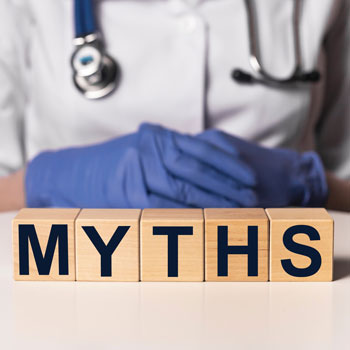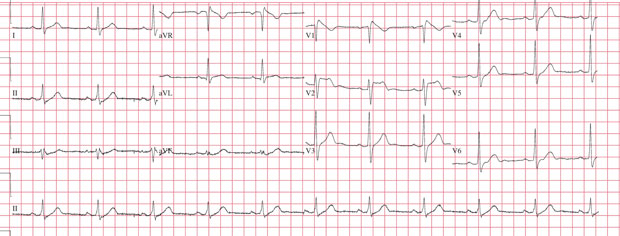Pandemic enters new phase with end of PHE
COVID-19 isn't gone, but the end of the U.S. public health emergency does mark some significant changes.
No one should take the conclusion of the U.S. public health emergency (PHE) to mean that COVID-19 is gone, experts say, but it does mark some significant changes in the handling of the virus.
Attendees at the latest ACP and Annals of Internal Medicine virtual forum on COVID-19 got a variety of perspectives on how the end of the PHE on May 11 can be expected to affect care. A recording of the May 19 forum, titled “COVID-19 Is No Longer a Public Health Emergency: Implications for Patients and Clinicians,” was published by Annals on May 23 and is free to watch.
“Let me lay out in broad terms why we ended the public health emergency,” said featured speaker Ashish Jha, MD, MPH, a general internal medicine physician and White House coordinator of the COVID-19 response, as he led off the forum. “The last two winters preceding this one, we have had situations where our health care system has gotten really crushed. … We made it through this winter without that level of stress.”
The PHE was intended to help the health care system get through those initial crises, and now, as management of the virus is more commonplace, it's no longer necessary, he explained. “COVID is still a major cause of suffering and death,” Dr. Jha said. “As we move out of the emergency phase and into more normal health care, it is really up to us as clinicians to make sure that our most vulnerable populations are not getting sick or not dying of COVID.”
It's notable that recent statistics have shown that most deaths from COVID-19 occurred among not just elderly patients but those who hadn't received all the vaccines and treatments for which they were eligible, he reported. “We think most of those deaths can be prevented,” he said.
The availability of COVID-19 vaccines and treatments will not end with the PHE, he noted. “They remain free today and will remain free for some period of time,” Dr. Jha said. “The reason why vaccines and treatments were free was because the U.S. government purchased them and made them available for free.”
The government still has a stockpile of COVID-19 vaccines and treatments, but it is expected to be used up by later this year, he reported, and Congress has not funded any future purchases. It's also likely that new formulations of the vaccines will be approved by the FDA later in the year, and the government is not set to buy a nation's worth again.
By the fall, it's expected that insurers will be paying for these resources, he explained. The Affordable Care Act's preventive care mandates will require them to cover the COVID-19 vaccines at no cost to insured patients, and the HHS Bridge Access Program was recently launched to provide access for uninsured patients, Dr. Jha said. “Our goal is that treatments will remain low cost with low out-of-pocket expenses for most Americans.”
Other things that didn't change with the end of the PHE include telehealth coverage. “We want to take the lessons of the pandemic and figure out which ones do we want to keep,” said Dr. Jha. “Telehealth is one of those things where we don't want to go back.” In December 2022, Congress passed legislation extending Medicare reimbursement for telehealth services through the end of 2024.
“We hope it'll get extended beyond that,” he said. “I think you're going to see most of the telehealth programs continue to move forward, and my hope is that will mean that the private sector will continue investing and growing this area.”
Physicians' ability to provide telehealth across state lines has changed to some extent in recent months, because it's not based on federal policy, Dr. Jha noted. “Many states have decided to keep those waivers and are allowing for interstate telemedicine, which I think from a policy point of view is a good idea, but many other states are reverting back,” he said. “It's important to talk to your own medical society, talk to your state health officials” to stay updated.
One significant change that comes directly from the end of the PHE is the return of supervision regulations in academic medicine, Dr. Jha confirmed in response to a question from an attendee. “During the height of the crisis, if you think about April of 2020 in New York City, you were going to use different supervision rules for residents and students,” he said. “With broad consultation with health care systems, with health leaders, the general feeling was that a lot of those supervision rule suspensions were no longer necessary.”
Dr. Jha also fielded multiple questions about COVID-19 testing. Although the government is no longer stockpiling tests for the public, supplies remain. “You can still go to COVIDtest.gov today and order your free tests, so that program remains in effect for now,” he said. Many tests have also had their expiration dates extended, he noted. “You can look up your batch on the FDA website.”
Attendees also got the chance to tackle a question about COVID-19 testing, specifically what they would recommend when a healthy, middle-aged, fully vaccinated patient develops upper respiratory symptoms. The response was split between testing for COVID-19 and testing for both COVID-19 and flu.
Panelist Roger Bedimo, MD, MS, FACP, noted that the answer could depend on the season. “I think that testing for COVID-19 would be worth it. It is not necessary to consider testing for influenza outside the influenza period if somebody doesn't have high risk,” said Dr. Bedimo, professor of internal medicine at UT Southwestern Medical Center and infectious diseases section chief at the VA North Texas Health Care System in Dallas.
He got some disagreement from fellow panelist Carlos del Rio, MD, FACP. “They're not going to get treated because they have no risk for progression,” he said. “In this environment post-public health emergency, I may not necessarily say, ‘Oh, yes, you need to get tested every time you have a cough.’ It's going to get expensive, it's going to get difficult.”
Better instead to stay home, regardless of what virus is causing the symptoms, he suggested. “If I can see something good happen out of COVID, what to me really would be more important than having testing more available is having sick leave,” said Dr. del Rio, executive associate dean and distinguished professor in the department of medicine, division of infectious diseases, at Emory University School of Medicine in Atlanta.
If patients do have to go out with symptoms, they should wear a mask, he noted. In response to an audience question, the speakers delved into the debating over masking in health care facilities.
“I know that in our facility we had a lot of debate and discussion about what happens in the hospital versus what happens in the community. We also have a lot of employees that are expected to do one thing in the hospital but once they leave and go into the community, they're doing another thing,” said forum moderator Michael Tan, MD, FACP, associate professor of internal medicine at Northeastern Ohio Universities College of Medicine and Pharmacy in Rootstown.
“It's not necessarily a yes or no question. It's important to consider the setting,” said Dr. Bedimo. CDC guidelines also advise that the local level of COVID-19 transmission should be a guiding factor in masking decisions, he added.
“I look at masks like I look at my umbrella. I put it away when the sun is out. When it's raining, I take it out and use it, because I don't want to get wet,” said Dr. del Rio. “If we see an increase in cases of influenza in the community, I'm going to be wearing a mask.”
Dr. Jha also addressed masking, in a response to a question about the responsibility of Americans to protect the immunocompromised around them. “Look, masks clearly work,” he said. “I know that one-way masking works. I've walked into patients' rooms who have COVID. I have a high-quality mask on. That is highly protective.”
However, internal medicine physicians play a particular role in increasing use of one of the most critical protections for immunocompromised patients, he added. “A lot of people I know call me and say, ‘I can't get Paxlovid because my doctor said my symptoms are not very severe,’” Dr. Jha said. “We should be doing it based on risk of the patient, not severity of the symptoms. It's really, really important that we treat people a lot more effectively, a lot more aggressively than we are.”
That was a point on which all the experts definitely agreed, noted Dr. Tan. “Probably the biggest emphasis that we want to make sure that is conveyed here is that with a lot of these oral therapies … we're looking mostly at risk of progression, not severity of how they're presenting, but rather the risk that they're going to have potential complications,” he said.
Dr. del Rio tied the underuse of the therapies to prevent progression of COVID-19 back to the end of the PHE. “Part of the reason why the government has a huge stockpile is because we're not using it,” he said. “We're not using this tool that we have as much as we should.”




